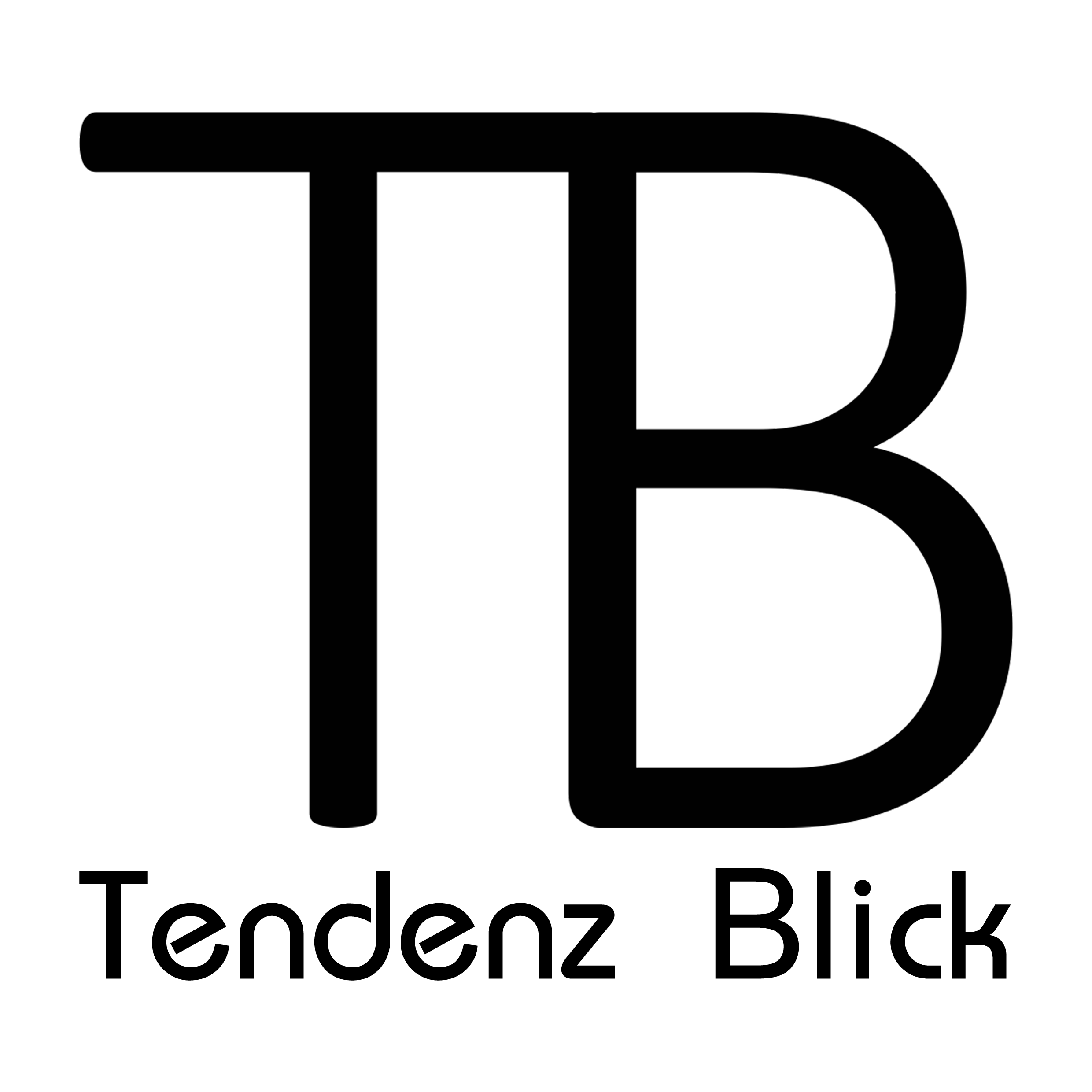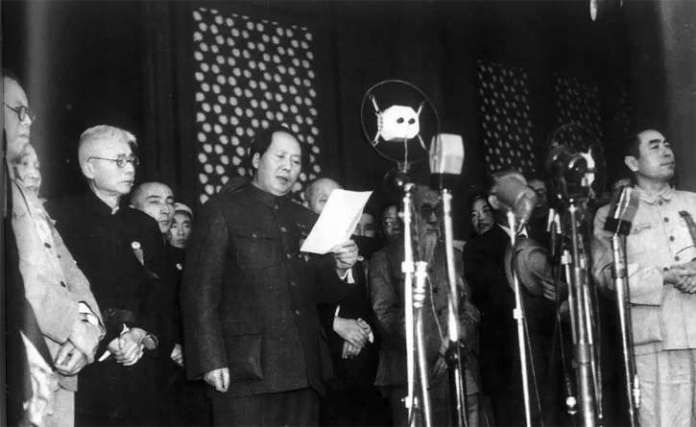
On a cool March afternoon in 1949, four flares streaked across the sky above Beijing’s Xiyuan Airport. Below, a modest American jeep slowly rolled into the airfield. Inside sat the most powerful men of the Chinese Communist Party—Mao Zedong, Zhou Enlai, Zhu De, Liu Shaoqi, and Ren Bishi—joined by top generals Lin Biao, Ye Jianying, and Nie Rongzhen. This was no ordinary inspection. It was the Party’s first large-scale event in Beijing after leaving their rural wartime base in Xibaipo—a quiet rehearsal, many would later say, for the birth of a new nation.
That day, Mao reviewed troops not from a grand car, but from one of the captured American jeeps taken from the Nationalist forces. He had turned down offers from high officials to use their luxury sedans. “Wouldn’t it be more meaningful to review the troops in our captured American jeeps?” he had said, smiling. A young commander named Xu He, whose regiment had fought in the decisive battle of Tashan, never forgot the moment: Mao, standing in the open jeep, waving at each unit as it passed, the wind lifting his long coat. It was the only time Mao would personally inspect troops from a vehicle. In later years, he would always watch parades from the Tiananmen rostrum.
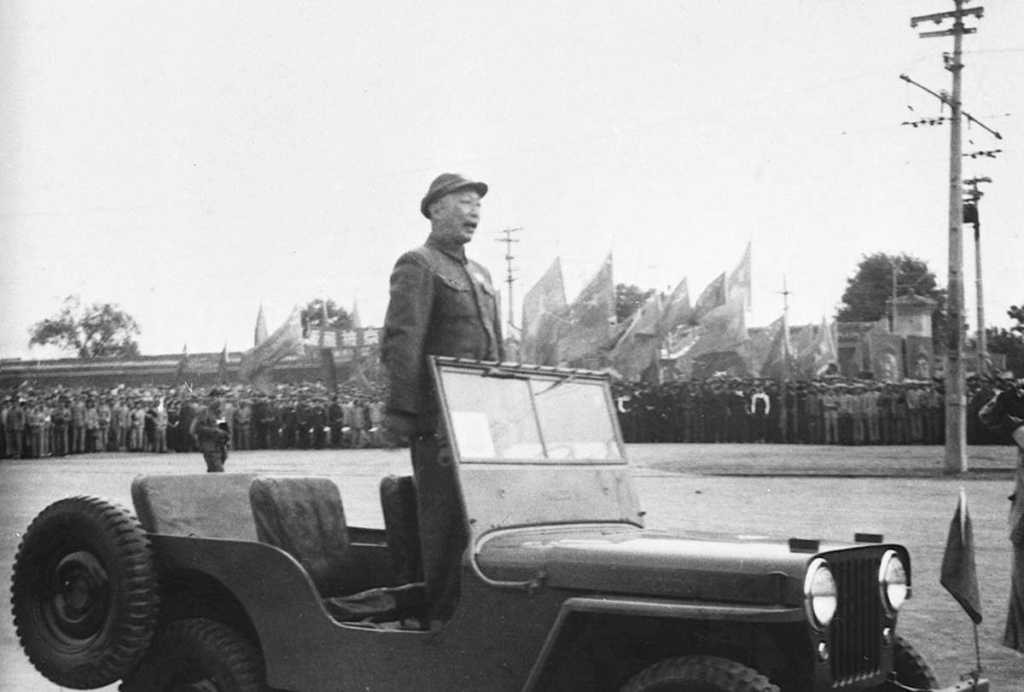
By July, preparations for the official founding of the People’s Republic were underway. Zhou Enlai chaired the committee in charge of the ceremony, and after lengthy discussions, two locations for the grand military parade were proposed: Tiananmen Square and Xiyuan Airport. Xiyuan had the advantage of space and prior use for large-scale events, but its distance from the city center and lack of proper viewing platforms made it less than ideal. Tiananmen Square, though still a neglected wasteland with chest-high weeds and a crumbling gate tower, held a symbolic power. It was central, spacious, and, most importantly, allowed the Party to stand side by side with the people.
Zhou submitted his recommendation: the parade should be held at Tiananmen. Liu Shaoqi quietly endorsed it by circling his name. Mao and Zhu De offered no written comment but agreed after Zhou’s oral briefing.
What followed was a race against time. The Tiananmen Gate Tower was in a state of decay—walls cracked, lanterns broken, thick pigeon droppings coating the ground like a carpet. A cannonball from past battles was even discovered lodged in a doorway. Soldiers swept, reinforced, tested the viewing platform for collapse by jumping on it in shifts. Zhang Zhixiang, in charge of the layout, submitted a plan: eight red flags, two slogans, a portrait of Chairman Mao, and red lanterns. Zhou Enlai approved everything—except the flowers on Jinshui Bridge, which he dismissed as “petty.”

Meanwhile, the military trained under the burning July and August sun. Over 16,000 soldiers assembled from various units—infantry, armor, artillery, cavalry, navy, and a newly formed air force. They trained 15 hours a day. The tank unit drilled in fields west of Beijing, often repairing old Japanese tanks on the spot. With no functioning radios, commanders resorted to crude but effective communication: stepping on drivers’ shoulders from the turret to signal turns.
Cavalry troops, elegant but notoriously difficult to coordinate, faced their own challenge. Riders reorganized 1,979 horses into black, red, and white columns, adjusting reins to ensure uniform stride and posture. Riders slept near their horses, grooming them, bonding with them—learning, at last, that alignment came not through force, but through trust.
Originally, the Air Force had not been included. But in late August, Nie Rongzhen asked whether aircraft could fly over Tiananmen Square. “We can organize a small squadron,” replied Chang Qiankun. From nine planes, the formation grew to 17—Mustangs, Mosquitos, transports, and even a few trainers. Nearly the entire People’s Air Force would be on display.
Security was a constant concern. The Kuomintang still controlled parts of the south and west and had a record of bombing cities like Peking and Tianjin. To guard against an air raid, the Central Military Commission stationed alert aircraft at Nanyuan, coordinated a surveillance network across liberated regions, and cleared the city’s airspace. The 3:00 PM start time was chosen precisely because enemy bombers usually struck in the morning. In fact, the Kuomintang had planned a raid on October 1 but aborted it—whether due to weather, logistics, or fear, no one could say.
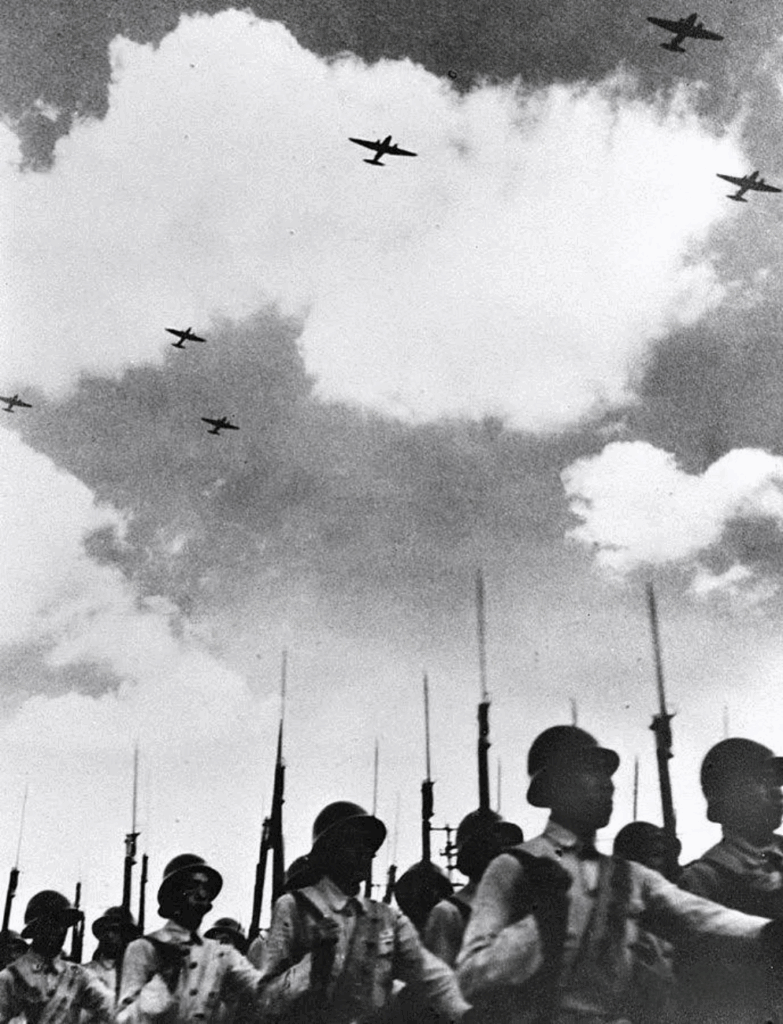
Just in case, the flyover pilots were armed—with live ammunition. When questioned later about this clear violation of international parade protocols, pilot Xing Haifan explained: “If the enemy came, there’d be no time to reload.” The day before the parade, each pilot took an oath: if something went wrong midair, they would crash away from civilians—never into the square.
On October 1, 1949, at precisely 3:00 PM, Lin Boqu opened the inauguration ceremony of the Central People’s Government. Mao Zedong stepped forward and declared the founding of the People’s Republic of China. The square, once a wasteland, now roared with the sound of celebration.
At 4:35 PM, the military parade began. Zhu De, standing in an open car with Nie Rongzhen, rolled slowly across the square, reviewing the troops. Marching in perfect formation came infantry and armor, cavalry and artillery. Overhead, 17 aircraft buzzed past in a tight formation. The crowd looked up as four fully armed P-51s screamed across the sky—a moment of awe and quiet tension. Below, horses marched six abreast, tanks rolled with deafening rhythm, and every boot that hit the pavement echoed through loudspeakers, thanks to China’s first-ever “live broadcast.”
Qi Yue and Ding Yilan narrated the event, their voices carrying the sounds of marching feet, rumbling engines, and flying planes to every corner of the country. For the first time, the people of China heard, in real-time, the birth of their new republic.
And thus, from dusty airfields and cracked towers, from the sunburnt soldiers and patched-up planes, the People’s Republic of China began not just with a declaration—but with a parade that announced its presence to the world.
Source: people, souhu, our china story, Xinhua

